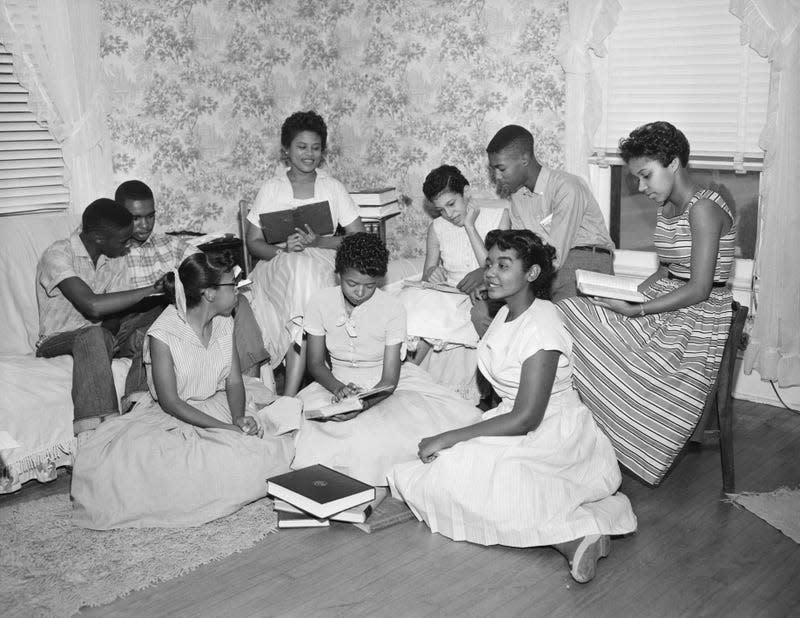70 Years After Brown V. Board of Education, Little Rock Nine Reflect on Their Sacrifice

- Oops!Something went wrong.Please try again later.
- Oops!Something went wrong.Please try again later.
- Oops!Something went wrong.Please try again later.
- Oops!Something went wrong.Please try again later.
- Oops!Something went wrong.Please try again later.
- Oops!Something went wrong.Please try again later.
In 1954, the Supreme Court’s seminal Brown V. Board of Education decision declared that racial segregation in the country’s public schools was unconstitutional. But despite that monumental ruling, Minnijean Brown, Terrence Roberts, Elizabeth Eckford, Ernest Green, Thelma Mothershed, Melba Pattillo, Gloria Ray, Jefferson Thomas and Carlotta Walls LaNier — the nine Black students who integrated Little Rock Central High School in 1957 — were not welcomed into their new school with open arms.
Instead, the group, known as The Little Rock Nine, was met by the National Guard blocking the school doors and a mob of angry protesters who didn’t want them there.
Now, 70 years after the Brown V. Board of Education decision, The Little Rock Nine are reflecting on their experience and the state of race relations in America today.
Speaking exclusively with ABC News, members of the Little Rock Nine said they hoped that by attending Little Rock Central, they’d have access to a better quality education than they could receive at an all-Black high school. But they soon learned that it would not be that simple.
Carlotta Walls LaNier said that while she knew they could face some resistance at their new school, she wasn’t prepared for how long it would last.
“First day, it did not bother me. I saw the crowd. I heard the name-calling,” she said. “I recognized that there would be people out there that did not want me there. That, I expected, okay ... not for it to last as long as it did.”
Terrence Roberts said that although they faced daily threats on their lives, the teens knew their presence at Little Rock Central was important and necessary.
“We didn’t have time to think about those things because our focus was on staying alive,” he said. “Believe it or not, this was a life-threatening situation. People threatened to kill us every hour, every day. But in spite of that, we were willing to stay there because it was important to be there.”
In a day-long celebration on May 17, the NAACP is partnering withthe Smithsonian National Museum of African American History and Culture in Washington, D.C.to pay tribute to the Little Rock Nine.NAACP President Derrick Johnson says the group deserved to be honored for their sacrifice.
“Those individuals had to carry that trauma from their childhood through adulthood. We just need to say thank you,” he said.

